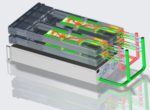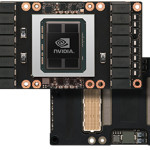At DDC, the global leader in scalable datacenter-to-edge solutions, we are taking an innovative approach to building new and retrofitting legacy datacenters. Today, our patented cabinet technology can be deployed in nearly any environment or facility and….
Inspur Launches Server for Mobile Liquid Cooling Cluster
Data center infrastructure provider Inspur Information has announced a plate liquid-cooling 2U 4-node server, the i24M5-LC, that the company said is optimized for large-scale water-cooling server data centers with PUE<1.2. Inspur said the i24M5-LC, built for HPC and cloud data centers, adopts a liquid cooling design based on....
The UK Innovation Corridor: HPC and the Bio-Technology Revolution
Today there are more patents being approved in the Innovation Corridor per capita than in Silicon Valley, USA. In 2019, it was named as the UK’s fastest growing economic region, with businesses in the corridor reporting a turnover of around £121 billion per annum. With a growing population of around 2 million within the corridor, urbanisation is fast becoming a key trend, but there is more to draw the world’s brightest minds here than by its reputation alone. There are, for example, organisations like AstraZenca, which are changing the way medicines and therapies are developed globally, businesses that are influencing how the financial markets are evolving and incubator projects leveraging HPC and AI to drive development at the forefront of many fields of industry.
Bring your workloads to Iceland: Verne Global adds powerDIRECT+
Today Iceland-based co-hosting provider Verne Global announced powerDIRECT+, a reduced-cost compute environment engineered specifically for the next generation of power intensive computing. With the addition of powerDIRECT+, Verne Global has expanded its compute environments to equip CIOs with streamlined and cost-effective data center options, breaking the decades-old model of one-size-fits-all data center design.
NVIDIA Tesla P100 GPU Speeds AI Workloads in the IBM Cloud
Today IBM announced that it is the first major cloud provider to make the Nvidia Tesla P100 GPU accelerator available globally on the cloud. “As the AI era takes hold, demand continues to surge for our GPU-accelerated computing platform in the cloud,” said Ian Buck, general manager, Accelerated Computing, NVIDIA. “These new IBM Cloud offerings will provide users with near-instant access to the most powerful GPU technologies to date – enabling them to create applications to address complex problems that were once unsolvable.”
Dell Opens Line of Business for Hyperscale Datacenters
Today Dell announced a new business unit aligned around hyperscale datacenters. “The Datacenter Scalable Solutions (DSS) group is designed to meet the specific needs of web tech, telecommunications service providers, hosting companies, oil and gas, and research organizations. These businesses often have high-volume technology needs and supply chain requirements in order to deliver business innovation. With a new operating model built on agile, scalable, and repeatable processes, Dell can now uniquely provide this set of customers with the technology they need, purposefully designed to their specifications, and delivered when they want it.”
Video: Datacenter Computers – Modern Challenges in CPU Design
“Computers used as datacenter servers have usage patterns that differ substantially from those of desktop or laptop computers. We discuss four key differences in usage and their first-order implications for designing computers that are particularly well-suited as servers: data movement, thousands of transactions per second, program isolation, and measurement underpinnings. Maintaining high-bandwidth data movement requires coordinated design decisions throughout the memory system, instruction-issue system, and even instruction set.”










